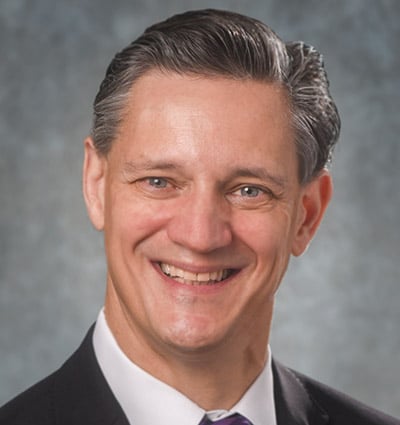Funding Summary
Dr. van Bosse and his team will define the typical posture of grown children and adults with PWS without spinal deformities (e.g., scoliosis). These results will be compared to results from the general population will be used to create guidelines for the alignment of the spine after spinal surgery in children with PWS.
Dr. Theresa Strong, Director of Research Programs, shares details on this project in this short video clip.
Lay Abstract
Project summary: This study’s purpose is to define the typical standing posture (spine alignment) of a grown child or adult with Prader-Willi syndrome (PWS) without spine deformities. Guidelines can then be set for post-operative alignment after spine deformity surgery for children with PWS. Over a 2-year span, 30-40 patients without known spine deformity will be recruited from 4 clinics that follow children with PWS to skeletally maturity. Enrollees will be skeletally mature or nearly mature. Demographic information collected will be gender, age, genetic type of PWS, height/weight/body mass index (BMI), and growth hormone supplementation history. Standing spine X-rays (frontal and side views) will first be assessed for scoliosis. Then, on the side view, measurements of spinal alignment will be made, both segmentally (cervical, thoracic, lumbar and pelvis measures) and total spine alignment (how the head is positioned over the pelvis). These measures will be compared to published values for the general population.
Project relevance: Nearly 70% of children with PWS will develop a curve, and many will require surgery. For the younger child, the curve is spanned by expandable implants that can be extended as the child grows, whereas adolescents require a formal spinal fusion. Spine surgery for patients with PWS has a high complication rate, with late deformity of the spine a common and serious event. One of the objectives of spinal surgery is to correct the postural alignment (as seen from the side) to a “normal” alignment. This would include correcting the increased kyphosis and head forward position often seen accompanying the scoliosis of children with PWS. But post-operatively, the patients seem to struggle to reestablish the head forward position, both by extending their head forward and increasing their overall kyphosis. The instrumented spine cannot bend, so the force is concentrated above and below the instrumented section, leading to “junctional” or sharp-bend kyphosis. Subsequently, the new deformity may cause the spine to pull away from the rods, resulting in a failure of fixation of the spine.
Next steps: The study will generate a set of measurements defining typical PWS spinal alignment, which will be published and accessible to surgeons treating spine deformities in children with PWS. As followup, a retrospective study will compare pre, post-operative and followup spine alignments of patients with PWS who underwent surgery, to assess outcomes as a function of post-operative alignment. That will help establish whether achieving alignment closer to the newly defined postural values typical of adults with PWS leads to better outcomes, with less late deformity.
Direct therapeutic development: By determining and adhering to PWS-specific spinal alignment values during surgical correction, we expect to reduce post-operative failures and improve spine comfort.
Funded Year:
2020
Awarded to:
Harold van Bosse, MD
Amount:
$71,820
Institution:
Shriner’s Hospitals for Children, Philadelphia
Researcher:

Harold van Bosse, MD




